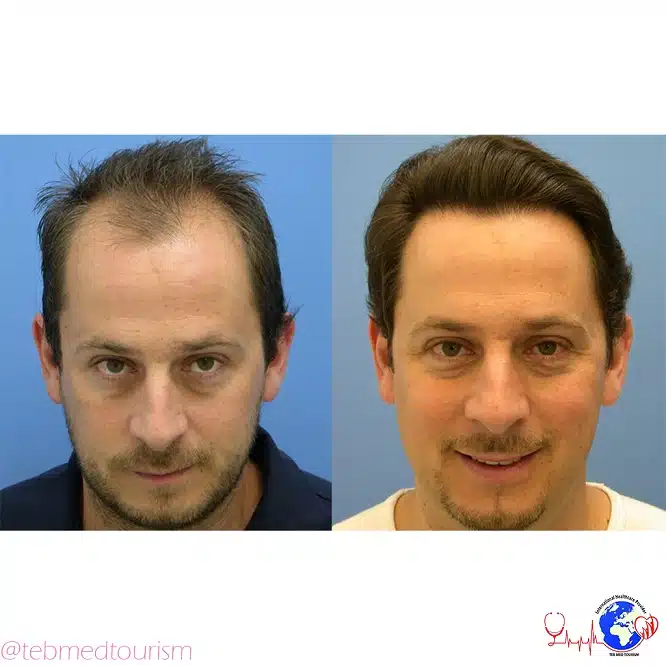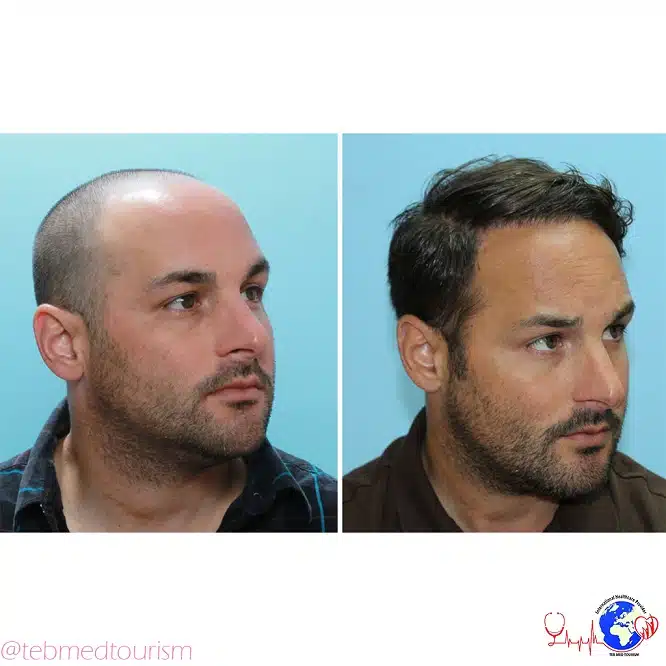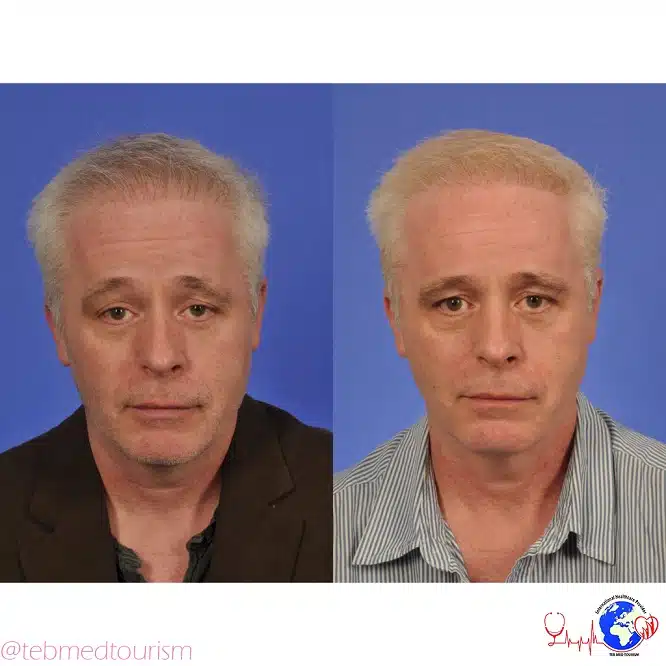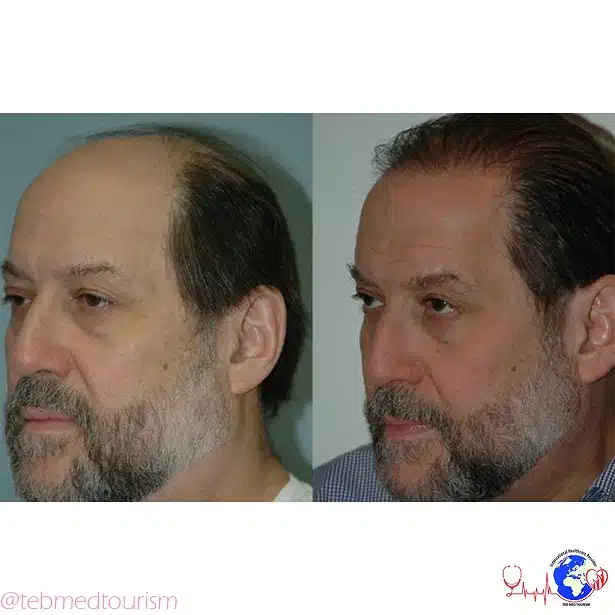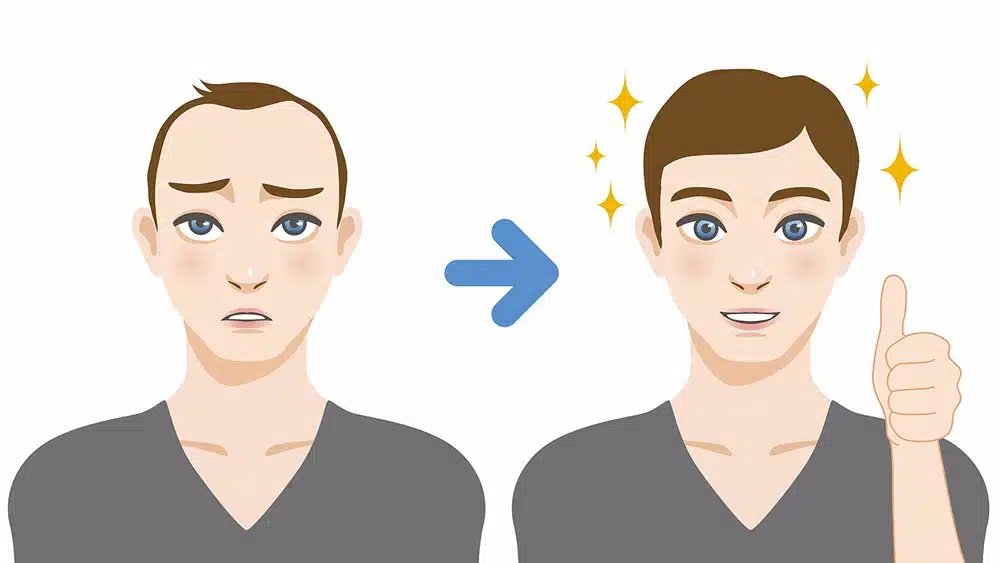Hair Transplant in Iran: Hair loss occurs in more than 60% of men and in approximately 10% of women. Although a lack of scalp hair can potentially increase the risk of scalp skin damage and skin cancer, male and female baldness pattern conditions are, with few exceptions, treated electively.
Balding is a major concern for many, and surgery to treat hair loss (ie, hair transplantation) is the most common cosmetic surgery procedure performed on men and women today. Yet, the market for hair transplantation is dwarfed by the immense market for products that treat hair loss without surgery.
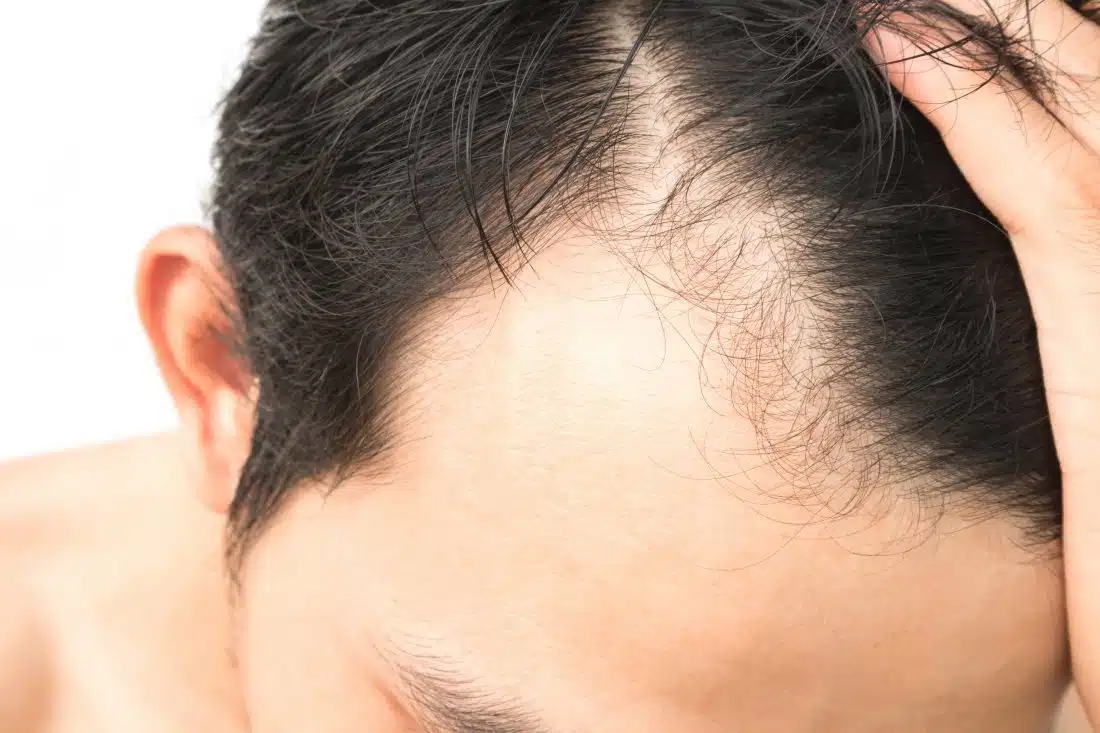
Hair Transplant cost in Iran by TebMedTourism company

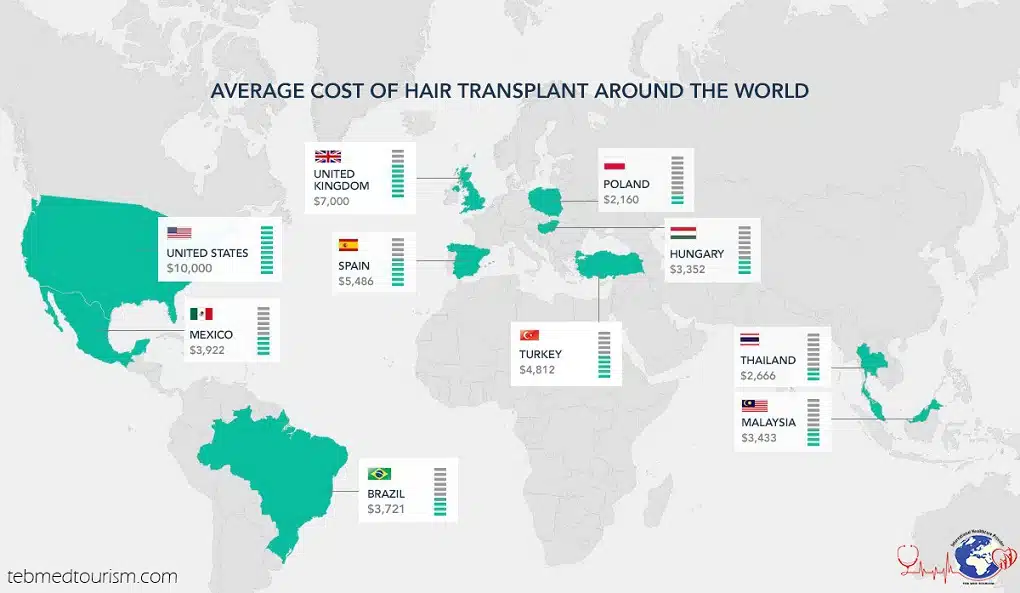
How much is Hair Transplant cost in Iran compared with Hair Transplant cost in other countries?
Nowadays, medicine is a globalized and most issues like Hair Transplant can be treated in different parts of the world. However, every year many people go to Iran to receive Hair Transplant treatment there. Some important reasons for most patients are the high quality of the therapy and the significant role of costs compared to other countries. Generally, Hair Transplant cost in Iran is one fifth of Hair Transplant cost in other countries while the quality is compatible with countries such as the USA and Germany.
- You can find the average cost of Hair Transplant in Turkey 260% higher than the cost of Hair Transplant in Iran.
- You can find the average cost of Hair Transplant in Thailand 400% higher than the cost of Hair Transplant in Iran.
- You can find the average cost of Hair Transplant in Malaysia 345% higher than the cost of Hair Transplant in Iran.
- You can find the average cost of Hair Transplant in India 290% higher than the cost of Hair Transplant in Iran.
- You can find the average cost of Hair Transplant in Mexico 400% higher than the cost of Hair Transplant in Iran.
- You can find the average cost of Hair Transplant in Poland 455% higher than the cost of Hair Transplant in Iran.
- You can find the average cost of Hair Transplant in Hungary 355% higher than the cost of Hair Transplant in Iran.
- You can find the average cost of Hair Transplant in Italy 370% higher than the cost of Hair Transplant in Iran.
- You can find the average cost of Hair Transplant in UK 545% higher than the cost of Hair Transplant in Iran.
- You can find the average cost of Hair Transplant in Germany 595% higher than the cost of Hair Transplant in Iran.
- You can find the average cost of Hair Transplant in Prague 570% higher than the cost of Hair Transplant in Iran.
- You can find the average cost of Hair Transplant in Canada 790% higher than the cost of Hair Transplant in Iran.
- You can find the average cost of Hair Transplant in Ireland 1010% higher than the cost of Hair Transplant in Iran.
- You can find the average cost of Hair Transplant in USA 1510% higher than the cost of Hair Transplant in Iran.
Hair Transplant in men
Hair loss in men almost always is due to androgenic pattern baldness, which is usually referred to as male pattern baldness. Although the exact cause of pattern balding is unclear, the trait is transmitted by means of a polygenic type of inheritance. Hair Transplant in Iran
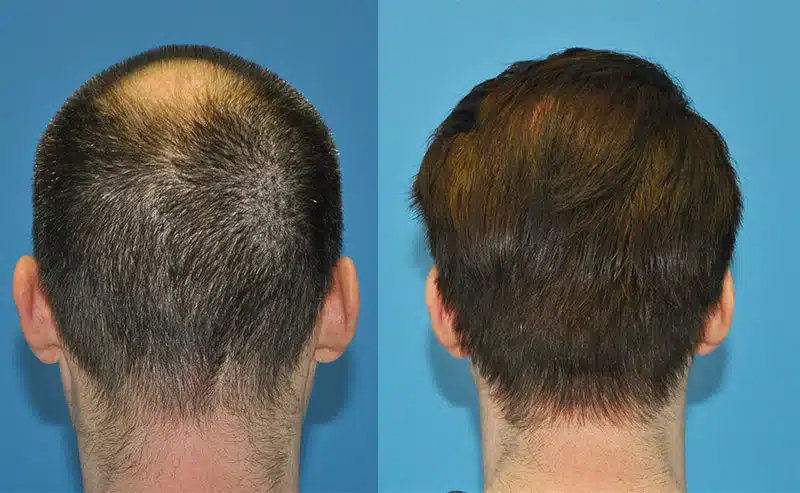
Hair Transplant in women
In women, most hair loss is also genetic, although women have an increased incidence of hair loss caused by medical conditions, such as hormonal imbalance, trichotillomania, and post-stress telogen effluvium. Interestingly, even with androgenic alopecia in women, there appears to be an additional inflammatory contribution to hair loss, as scalp biopsies often reveal a localization of lymphocytic folliculitis around the stem-cell–containing bulge region of the hair follicle. As with male pattern baldness, female androgenic hair loss pattern is progressive. Hair Transplant cost in Iran
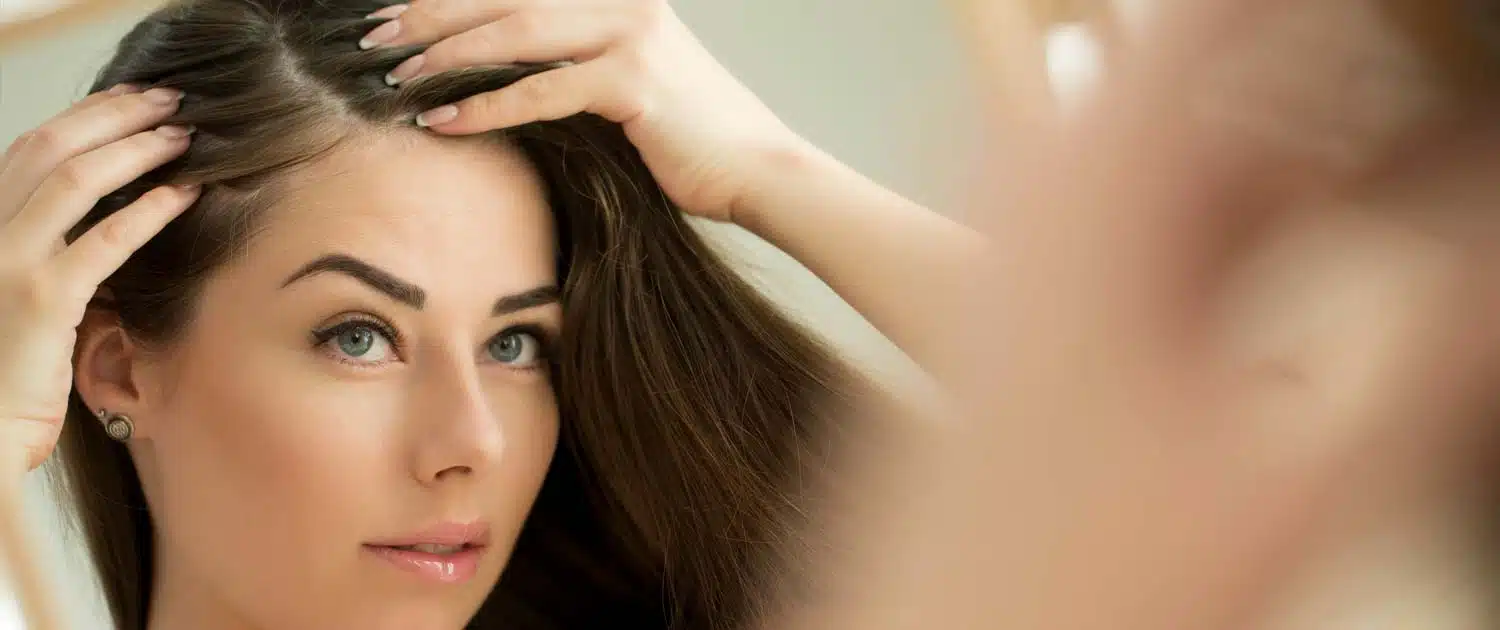
Hair transplant procedure
The procedure of hair transplantation in women is not different from men. As the doctor makes a small incision on the recipient area and he implants the hair into the incisions on the scalp. Based on your type of hair loss that you as a woman are affected by, the treatment is chosen and it can vary from FUT technique to FUE technique.
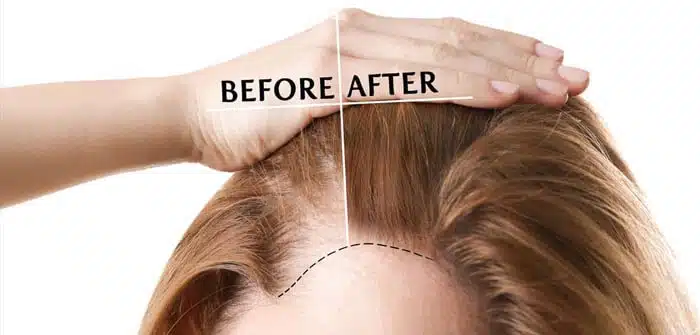
There are two main methods for hair transplantation for women which have different usages, these methods include:
- Harvesting hair follicular units Mini grafts are carefully harvested in the recipient areas. They are also removed carefully to preserve the grafts of the donor area. There is no need to shave the scalp before the hair transplant for women.
- Grafts transplanting In this method, the incisions are made to implant the grafts into scalp. The most important point in this method is placing the grafts in the right place with the right direction regarding the existing hairs. The both techniques have perfect outcomes and the donor area will be scarless and no one will recognize that you had hair transplantation as there is no sign of surgery. In the first or second weeks you may see the transplanted hair have fallen out but don’t worry as they grow again in next weeks. Within a few months, you will have a full head.
Nearly all men and most women who have androgenic or inherited pattern baldness can be treated with hair transplantation (or hair transplant). As in all other elective cosmetic surgeries, the most important patient selection criterion in hair transplant is the individual’s motivation. Results of hair transplant in Iran are usually most dramatic when the procedure is performed on individuals with advanced degrees of hair loss. In general, the greater the degree of hair loss, the larger the number of grafts transplanted. Hair Transplant in Iran
Hair transplant may not be the most effective therapy for some medical causes of hair loss; in some instances, it exacerbates the condition. Therefore, workup to rule out other treatable causes of hair loss is important, especially in women, in whom non-genetic etiologies for the hair loss are more common than in men. Hair Transplant In addition to male or female baldness pattern, a variety of conditions can be successfully treated with hair transplant. Scarring of the scalp due to trauma or surgery and hair loss due to traction (seen with the extended wearing of hair pieces or trichotillomania) can be repaired with hair transplant. Finally, hair transplant can be successfully used to restore hair to the eyebrows; eyelashes; beard, mustache, or goatee area; and even to areas of the body, such as the pubis or chest. Hair Transplant cost in Iran
For additional information, see:
What should you know before considering a hair transplant?
Hair transplant is a surgical procedure that removes hair follicles from hair loss resistant part of your body and transfer to a bald part of your scalp or beard or eyebrows. Hair transplant is a permanent solution for hair loss and baldness. Therefore, hair transplant is a natural choice to treat baldness or backward front hairline. You may benefit natural hair transplant to treat hair loss in scalp, eyelashes, brows, beard, chest or pubis. Hair transplant could treat hair loss due to post-surgical scars. Beard hair transplant
Who is a good candidate for natural hair transplant?
- Men with male hair loss pattern which last more than 5 years.
- Men who realize their natural hair loss progress within taking medication.
- Bald men for many years who desire to have a younger appearance.
- Women and men with hair loss due to genetic disorders, trauma, post-surgical scars or burning.
What are the hair transplant techniques?
The two principal techniques for hair transplant are FUT (follicular unit transplant) (also known as: “strip”) and FUE (follicular unit excision). Some hair transplant specialists use combination of FUT and FUE to increase the quality and success rate of hair transplant.
In FUT techniques, the surgeon removes a strip of hair-bearing skin from the back of your scalp. Hair follicular units, compromised of one to four hairs, will be removed from the strip in a professional laboratory, before transplantation. In patients with large hair loss area, FUT technique is preferred to harvest and transplant more hair follicles in one session. In FUE technique, every hair follicle unit is harvested separately and no skin strip is taken. In this hair transplant technique, hair follicles harvest randomly so hair density reduction in donor area is not significant without any surgical procedure (non-surgical hair transplant). In FUE hair transplant method, the number of transplanted hair follicles is fewer compared to FUT, due to harvesting hair follicles one by one. FUE hair transplant technique is a less invasive non-surgical method with minimal scarring and short recovery period. Both the FUT and FUE techniques require a local anesthesia.
Necessary tips to be done after a hair transplant procedure:
- Go home or hotel and rest after your hair transplant procedure. Elevate your head 45 degrees to avoid swelling for three nights.
- Use snow to your transplanted area every 2 hours for 15 minutes to avoid swelling.
- On the first night, a bandage will be on your donor and transplant area. The next morning, open the bandage gently. Do not pull the band. Pulling the band may injure the transplanted hair follicles. If you open the bandage on the first night, your skin may be swelling.
- On the first day of hair transplant, you could take a shower. Do not use shampoo or soap to wash your head and wash the planted area gently with water.
- After the first day, wash your hair with your fingers gently. Try not to add pressure to the area where the follicles are planted. Do not use comb which may injure your sutures.
- You may use shampoo on the second day of hair transplant.
- Try to avoid hair dryers in the first two weeks after your hair transplant.
- You may feel some itching and pain for a few days after hair transplant. These symptoms can be reduced by using ice or some medications (which will be prescribed by your doctor).
Additive instructions and recommendations will be presented by your doctor.
Feel free to ask your probable questions from TebMedTourism consultant medical doctors:
Hair transplant pros & cons
Hair transplant advantages and pros:
- The main purpose of hair transplant is getting a normal growing and natural hair. Hair transplant is a permanent hair loss treatment technique.
- Hair transplant has permanent effects with life span lasting results.
- Hair transplant will improve your style and self-confidence.
- Hair transplant is a cost-effective procedure compared with medications.
- Eyebrow hair transplant result seems more natural compared with micro pigmentation or tattoos.
- Hair transplant is a safe operation that could be done in pregnant women.
- Despite hair transplant is done under local anesthesia without any complications in patients with cardiac and renal diseases, we recommend to consult with your doctor in case of heart and renal disease, before performing hair transplant.

Hair transplant disadvantages and cons:
- Temporary scalp swelling
- Hair follicle infection
- Scalp itching
- Transplanted hair loss: It is a normal reaction to fall out transplanted hair in first 2 to 3 weeks, which is called “shock hair loss”. This may result in new hair growth. Most patients will experience new hair growth 8-12 months after the operation.
- Wide ulcers and wounds.
- Massive bleeding, especially in heavy smokers or alcoholic patients. These habits may increase hair transplant rejection.
We recommend avoiding smoking and alcohol consumption for weeks before and after hair transplant to achieve best hair transplant results.
Is it safe to get a hair transplant?

Risks of hair transplant
Aggravation With regards to hair transplant medical procedure the encountering aggravation is very basic similarly as with each other sort of medical procedure. As the hair of the patient will begin to come in, aggravation will begin to happen. Balding In the wake of completing hair relocate medical procedure, patients may encounter a slight balding
Hair restoration or hair transplant duration

Span and after-effect of hair transplant
The recovery period and the time allotment for ideal outcomes from hair transplantation is different patient to patient. Most people will see the results of hair transplant in four months after the procedure. Regarding that, there are some points you should notice so you will have a clear view of what’s happening after a hair transplant procedure. The results may seem somewhat unclear in the early stages, because the relocated hair ought to grow enough for an advancement assessment up to the 5th or 6th months following hair transplantation.
Hair transplants from another person: Yes or No?
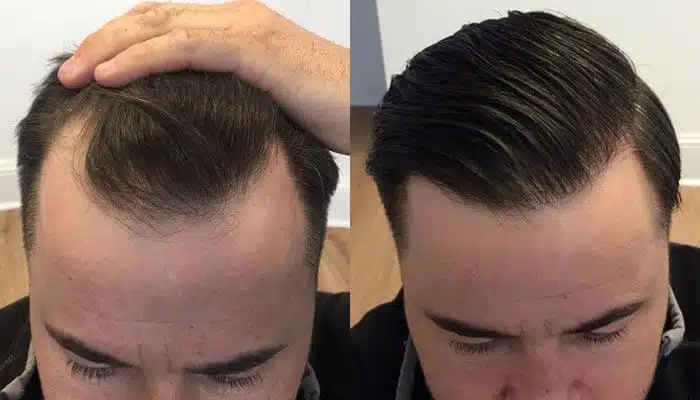
Hair transplants from another person, Why not?
When two people don’t have similar DNA, the immune system refuses the grafts and this rejection causes infection in the implanted grafts and they won’t survive. So people cannot donate hair follicular units to each other. The reason for these complications is the mismatch between the tissue characteristics and the body’s defense systems between humans, which the immune system recognizes the follicles entering the body as foreign cells and rejects the follicles entered in the hair transplant operation. Hair transplant with other people’s hair bank has other complications and risks that a person should be aware of, among the dangers of using other people’s hair bank for hair transplantation on another person’s head; we can mention hair loss, infection and other diseases.
When do the celebrities get hair transplant?

Fortunately, there is a permanent less invasive solution to treat hair loss which is getting Hair Transplant. In hair transplant procedure, a bundle of hair follicles will be removed from a part of your body, which is called “donor site” and transfer to another part of your scalp or beard or eyebrow, which is called recipient site. If the doctor performs the procedure of hair transplant properly with modern techniques, the reason appears more natural, so any one could not recognize your previous hair transplant. Now, Let us take a look to the history of hair transplant of celebrities.
When did the Oscar winner get hair transplant?
Did you know Matthew McConaughey, 2014 Oscar winner, had got hair transplant? An important point influencing the hair transplant results is getting hair transplant at an early stage of hair loss. At early stages of hair loss, the doctor could fulfill your dream of cessation of hair loss and transplant hairs to the bald fields. So you will not experience baldness in your life and others believe that you do not face with hair loss. Matthew McConaughey is a handsome artist who got hair transplant at a proper age. His hair loss start in 2000 but he vanish his hair loss by getting hair transplant.
What is the suitable age to get a hair transplant?
DHT (dihydrotestosterone) is an androgen sex hormone that contributes to the development of male sex characteristics like scalp hair loss. Sylvester Stallone has high levels of DHT, the same as other men. Sylvester Stallone care his style so when he realize that his hair is getting thinner, he decided to get hair transplant to treat his reduced hair density and front hair line. When you make your decision to get hair transplant, you expect your doctor to operate a natural-look hair transplant, not a fake one. Therefore, if you notice Sylvester Stallone’s pictures at different time periods, you will find that his front hair line is lower at 1980 compared with the present time.
Exercise after a hair transplant

After a natural hair transplant, it is recommended to avoid strenuous activities such as exercise because exercise and other intense activities can harm newly implanted follicles, which are very sensitive. Also, if your hair grafts have been removed and implanted by FUT method, the removed and sutured part of your hair bank is located behind of your head so activities may cause damage to the wound at the site of hair removal and sutures.
Intense exercise can be a threat to hair transplant for several reasons:
- Blood pressure: Increasing the heart rate as exercise raises your blood pressure and may increase the chance of bleeding in the recipient area of your skin and getting grafts out.
- Sweating and Washing: The scalp gets very sensitive after hair transplant, and a sauna or exercise that causes sweating may irritate the scalp and damage the surgical area.
- Stretching: Certain exercises that stretch the back of the neck (similar to what happens while sneezing) may apply a tensile force to the incisions. To increase the chances of healing as quickly as possible and reduce scarring at the surgical site, it is best to avoid strenuous exercise for the first 40 days after FUT surgery and stretching for the first few months.
- Medications: Medications and substances that you use in conjunction with your exercise may be effective in healing wounds or hair transplant. Therefore, the best way to avoid any interference is to consult your doctor.
- Damage to the follicles: You sweat during strenuous exercise. Sweating in the first days after
- Hair transplantation will be severely detrimental to the results of this process. Sweating damages the follicles and threatens your final hair transplantation result.
That is why it is recommended that people avoid exposure to very hot weather after hair transplant.
- Suture opening: Another problem with strenuous physical activity after hair transplant is the opening of the sutures. Of course, this is if you have used the FUT method for hair transplant. Because in FUE hair transplant method, there is no need to use stitches.
Hair transplant in Iran
When compared with other countries we can say that Iran would be the best destinations in terms of hair transplant procedure.
You Can restore your Hair at Affordable Prices:
Hair transplant in Iran is rather affordable in comparison to other countries. In Europe and in USA, you need a budget of $7000 – $25000 (depending on several factors), and yet in Iran, you need a budget around 800-1000 $ for your hair transplant operation.
No Need to Wait for an Appointment
In many other countries, because of the lack of hair transplant surgery teams, you need to wait for long periods to make an appointment for your hair transplant, and schedule your hair transplant for a later date. In Iran, you can make an appointment for your hair transplant for an approaching date, and have your hair back very soon by TebMedTourism team. Hair Transplant in Iran

You Can Enjoy Being in a Fun City as a Tourist
- Tehran has many historical, cultural, and social attractions.
- You can enjoy new tastes from one of the richest cuisines in the world.
- We believe you will want to visit Iran again
Many people each year travel to Iran for hair transplant. Based on the reports, Iran is changing to one of the leading countries for this popular surgery. But what makes it so popular to have a hair transplant in Iran? Actually, the main reasons to choose hair transplant in Iran are two factors:
Which City to choose for hair transplant in Iran?
As mentioned before, most big cities in Iran have this cosmetic surgery, such as Tehran, Isfahan, Shiraz, Yazd, and Mashhad. But Tehran has always considered the poles of surgeries in Iran, with its professional doctors. Many patients from countries around Iran, Arabian countries and all over the world visit this city each year to do their hair transplant in Iran. Many of these visitors decide to have touristic fun after their surgery. So after resting, they choose an Iran tour and visit any places they like in Iran. If you are one of them, just take a look at our Service(more…). Now that you know all you need about hair transplant in Iran, you can ask us to connect you with the best surgeons in Iran. If you have any requests, questions or suggestions, please feel free quote to contact us. Travel to Iran with peace of mind and have your hair transplant here.
Hair transplant FAQs
How long do my hairs take to grow after hair transplant?
While hair transplant is done from the donor site to the recipient site of your head, it will takes up to 12 to 18 months for your hairs to grow, thicken and mature completely. When your hair transplant is done, it might fall out in 4 to 6 weeks after a hair transplant and then restart to grow.
What are hair transplant techniques?
There are two main hair transplant techniques including:
- Follicular unit extraction (FUE)
- Follicular unit transplant (FUT)
How long does a hair transplant procedure take?
You need to do few laboratory tests before your hair transplant procedure. Once your lab test results get ready, you could start hair transplant procedure. Hair transplant procedure starts in the morning and finishes at the evening. Your hair transplant takes 5 to 8 hours depending on hair transplant technique.
How long do I have to stay in Iran for my hair restoration or hair transplant?
You need to stay in Iran for just 2 to 3 days to complete your hair transplant procedure.
What is hair mesotherapy needed after hair transplant?
In 4 to 6 weeks, new transplanted hairs begin to grow in harvested areas. In order to strengthen the new hairs structure and growth, hair mesotherapy is a great option. By hair mesotherapy, the doctor uses multiple injections of medications including plant extracts, vitamins, and other ingredients into your scalp or head skins.
Does hair transplant leave scars?
Scars in your scalp depend on your hair transplant technique. If the doctor suggests FUT technique or combination therapy of FUT + FUE (due to a large hair loss or baldness), most probably, there will remain a linear scar at the back of your head. There are scars with FUE technique but the scars are much less visible than one continuous linear scar that is expected from a strip hair transplant surgery or FUT technique. If you keep the hairs of donor site long, the scar is not typically visible.
What is the success rate of hair transplant?
The success rate of hair transplant in Iran by a skilled and expert team varies between 70 to 90 percent. A probable cause of hair transplant failure is the infection of donor site or transplanted hairs follicles. Hair transplants are typically more successful than over the counter hair restoration products.
Should I cut my hair for a hair restoration or hair transplant?
You should cut your hairs short before you do hair transplant procedure by FUE or FUT techniques. Its recommended to cut your hairs 8 to 10 days before you undergo hair transplant or hair restoration.
Is Hair Transplantation painful?
Although all hair transplant techniques are very convenient procedures, it is a surgical procedure nevertheless so some discomfort can be expected. The doctor will uses a local anesthesia in your donor site before hair transplant takes place so you may feel a mild pricking sensation during your hair transplant.
Is it possible to perform another cosmetic surgery in conjunction with my hair transplantation during the same trip to Iran?
During hair transplantation procedure, you do not need general anesthesia so you may like to do another cosmetic procedure along with hair transplant. The cosmetic procedure may include Hollywood smile or dental veneers, nose job or rhinoplasty, face filler injections or Botox injection.
What is the DHI technique?
DHI is approximately the same as FUE hair transplant technique. The difference between FUE and DHI hair implant technique is the way grafts are implanted into the recipient area. During FUE, the canals need to be opened before hair transplant procedure and the surgeon manually implants the extracted grafts. During DHI, a specific implanter tool or pen is used to harvest and transplant hairs.
How much is an average cost of hair transplant in the world?
The cost of a hair transplant is highly variable and ranges anywhere from $4,000 to $15,000.
How much is an average cost of hair transplant in Iran?
The average cost of hair transplant in Iran ranges 800-1500$.
How successful is hair transplant in Iran?
10 to 80 percent of transplanted hair will fully grow back in an estimated three to four months, depends on the doctor and the clinic’s experience.
Which type of hair transplant in the best one?
There are two types of hair transplant methods: FUT and FUE. The best option for you will depend on your hair loss type and the recommendations of your physician.
Is hair transplant permanent?
Hair transplant is a permanent solution to hair loss and programmed to continue growing for life. However, some patients may require more than one procedure to maintain their desired appearance.
